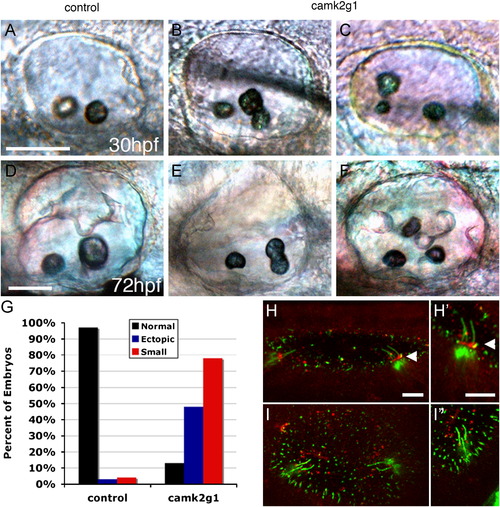Fig. 2
|
Otolith formation is defective in camk2g1 morphants. Gross morphology of otoliths was assessed at 30 hpf (A–C) and 72 hpf (D–F) in embryos injected with 1 ng control MO (A, D) or 1 ng camk2g1 MO (B, C, E, F). Scale bar (50 μm) in A applies to A–C and in D applies to D–F. Defects in otolith shape were quantitated at 72 hpf for 186 morphant embryos and compared to 118 control embryos (G). P-CaMK-II (red) at the base of the kinocilia in 24 hpf control (H, H′) embryos (arrowhead) was lost in camk2g1 morphants (I, I′). Cilia were counterstained with anti-acetylated tubulin (green) with anterior on the left. Scale bars in H, I=5 μm. |
| Antibody: | |
|---|---|
| Fish: | |
| Knockdown Reagent: | |
| Anatomical Term: | |
| Stage: | Prim-5 |
| Fish: | |
|---|---|
| Knockdown Reagent: | |
| Observed In: | |
| Stage Range: | Prim-15 to Protruding-mouth |
Reprinted from Developmental Biology, 381(1), Rothschild, S.C., Lahvic, J., Francescatto, L., McLeod, J.J., Burgess, S.M., and Tombes, R.M., CaMK-II activation is essential for zebrafish inner ear development and acts through Delta-Notch signaling, 179-88, Copyright (2013) with permission from Elsevier. Full text @ Dev. Biol.

